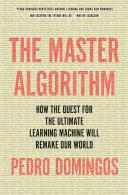Книга: The Master Algorithm: How the Quest for the Ultimate Learning Machine Will Remake Our World
Chapter Five
Chapter Five
“Evolutionary robotics,” by Josh Bongard (Communications of the ACM, 2013), surveys the work of Hod Lipson and others on evolving robots. Artificial Life, by Steven Levy (Vintage, 1993), gives a tour of the digital zoo, from computer-created animals in virtual worlds to genetic algorithms. Chapter 5 of Complexity, by Mitch Waldrop (Touchstone, 1992), tells the story of John Holland and the first few decades of research on genetic algorithms. Genetic Algorithms in Search, Optimization, and Machine Learning,* by David Goldberg (Addison-Wesley, 1989), is the standard introduction to genetic algorithms.
Niles Eldredge and Stephen Jay Gould propose their theory of punctuated equilibria in “Punctuated equilibria: An alternative to phyletic gradualism,” in Models in Paleobiology, edited by T. J. M. Schopf (Freeman, 1972). Richard Dawkins critiques it in Chapter 9 of The Blind Watchmaker (Norton, 1986). The exploration-exploitation dilemma is discussed in Chapter 2 of Reinforcement Learning,* by Richard Sutton and Andrew Barto (MIT Press, 1998). John Holland proposes his solution, and much else, in Adaptation in Natural and Artificial Systems* (University of Michigan Press, 1975).
John Koza’s Genetic Programming* (MIT Press, 1992) is the key reference on this paradigm. An evolved robot soccer team is described in “Evolving team Darwin United,”* by David Andre and Astro Teller, in RoboCup-98: Robot Soccer World Cup II, edited by Minoru Asada and Hiroaki Kitano (Springer, 1999). Genetic Programming III,* by John Koza, Forrest Bennett III, David Andre, and Martin Keane (Morgan Kaufmann, 1999), includes many examples of evolved electronic circuits. Danny Hillis argues that parasites are good for evolution in “Co-evolving parasites improve simulated evolution as an optimization procedure”* (Physica D, 1990). Adi Livnat, Christos Papadimitriou, Jonathan Dushoff, and Marcus Feldman propose that sex optimizes mixability in “A mixability theory of the role of sex in evolution”* (Proceedings of the National Academy of Sciences, 2008). Kevin Lang’s paper comparing genetic programming and hill climbing is “Hill climbing beats genetic search on a Boolean circuit synthesis problem of Koza’s”* (Proceedings of the Twelfth International Conference on Machine Learning, 1995). Koza’s reply is “A response to the ML-95 paper entitled…”* (unpublished; online at www.genetic-programming.com/jktahoe24page.html).
James Baldwin proposed the eponymous effect in “A new factor in evolution” (American Naturalist, 1896). Geoff Hinton and Steven Nowlan describe their implementation of it in “How learning can guide evolution”* (Complex Systems, 1987). The Baldwin effect was the theme of a 1996 special issue* of the journal Evolutionary Computation edited by Peter Turney, Darrell Whitley, and Russell Anderson.
The distinction between descriptive and normative theories was articulated by John Neville Keynes in The Scope and Method of Political Economy (Macmillan, 1891).
- Chapter Ten
- Chapter One
- Part Five - Responses
- Chapter Three
- Chapter 17. Responses
- CHAPTER FIVE: Evolution: Nature’s Learning Algorithm
- Chapter 5. Preparations
- Chapter 6. Traversing of tables and chains
- Chapter 7. The state machine
- Chapter 8. Saving and restoring large rule-sets
- Chapter 9. How a rule is built
- Chapter 10. Iptables matches




